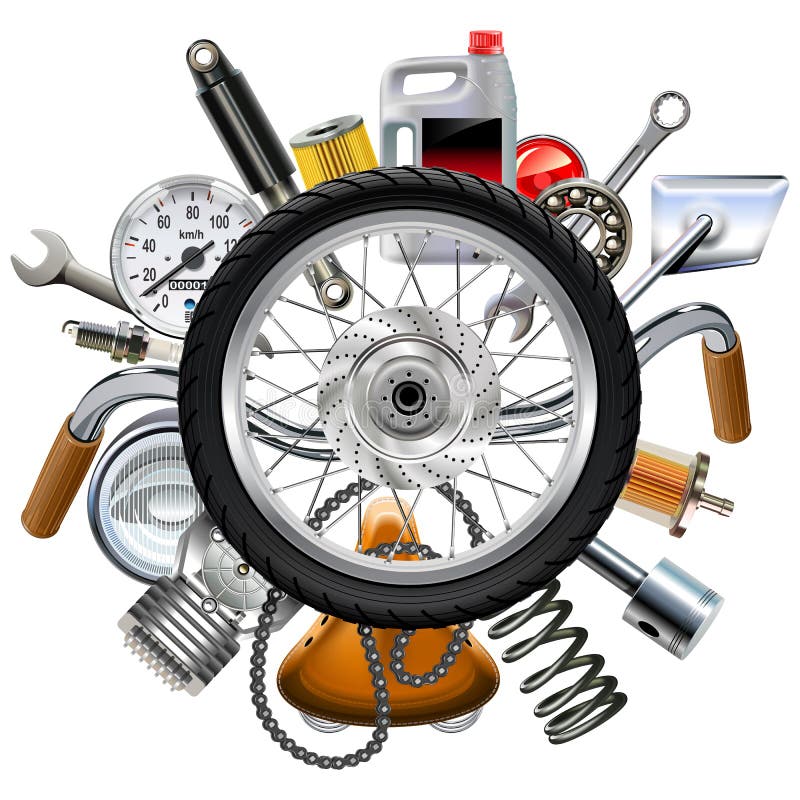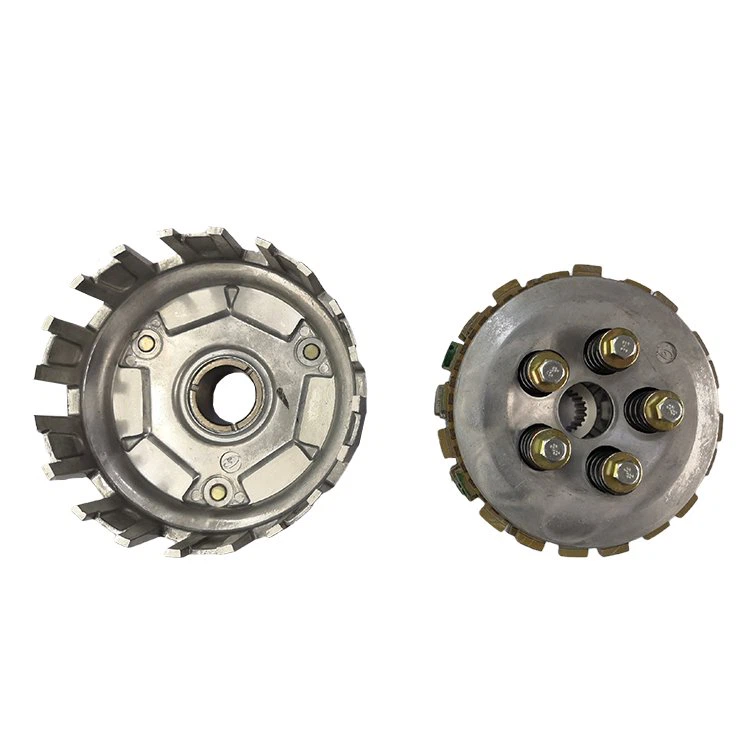Motorcycles are not just vehicles; they are a lifestyle for many riders. At the heart of every bike is its engine, a complex piece of machinery that translates fuel into power. Understanding the engine parts and how they function is essential for every motorcycle enthusiast. This knowledge can enhance your riding experience and assist with maintenance and repairs. In this article, we will explore the critical components of motorcycle engine parts, their functions, and their significance in your ride.
The Engine Block: The Heart of the Motorcycle
What is the Engine Block?
The engine block is often referred to as the heart of the motorcycle. It serves as the main structure housing the engine’s components. Typically made of cast iron or aluminum, the engine block is where the pistons, crankshaft, and camshaft are located. Its design is critical for the engine’s performance, durability, and overall functionality.
The engine block is essential for housing the cylinders that process the fuel-air mixture. This mixture is vital for generating the power required to propel the motorcycle forward. Through combustion, the energy generated pushes the pistons down within the cylinders, ultimately driving the crankshaft and enabling the motorcycle to move.
The Importance of Engine Block Design
The design of the engine block affects various performance aspects. For example, the number of cylinders influences the power output and torque. A motorcycle with more cylinders can typically produce more power, making it suitable for high-performance riding. However, more cylinders can also mean increased weight and complexity.
Additionally, the engine block design affects heat dissipation. A well-designed block will manage heat efficiently to avoid overheating during operation. This is crucial since excessive heat can lead to engine damage and reduced performance. Overall, the engine block is fundamental to the motorcycle’s operation and longevity.

Pistons: The Power Generators
Function of Pistons
Pistons are key components within the cylinders of the engine block. Their primary role is to convert the energy generated from the combustion of fuel into mechanical movement. As the air-fuel mixture ignites, it creates high-pressure gas that forces the pistons downward. This downward movement powers the crankshaft, which subsequently drives the motorcycle’s wheels.
Typically made from aluminum or lightweight alloys, pistons are designed to withstand immense pressure and temperature. The size and shape of the piston can also influence the engine’s performance characteristics. A taller piston can increase compression, which, in turn, can elevate power output.
Signs of Piston Wear
Over time, pistons can experience wear and tear. Signs of piston wear include decreased engine performance, increased oil consumption, and unusual noises during operation. Regular maintenance can help identify potential issues before they lead to major engine problems. Checking piston condition and ensuring proper lubrication during oil changes are essential practices for keeping the engine running smoothly.
If you notice a decline in performance or any unusual sounds while riding, it may be time to inspect the pistons. Replacing worn or damaged pistons can restore engine performance and prolong the life of your motorcycle.

Crankshaft: The Engine’s Driving Force
Understanding the Crankshaft
The crankshaft is another vital component in the motorcycle engine parts. Its primary function is to convert the linear motion of the pistons into rotational motion. This rotation is what ultimately powers the motorcycle. The crankshaft is often made of high-strength steel and is precision-engineered to withstand high levels of stress during operation.
The crankshaft works in harmony with the pistons. As the pistons move up and down due to the combustion process, the crankshaft rotates. This rotation transfers power to the wheels through the transmission. The design and balance of the crankshaft significantly influence engine smoothness and efficiency.
Crankshaft Maintenance
Maintaining the crankshaft is crucial for optimal engine performance. Regular maintenance includes checking for any signs of wear or damage, such as cracks or warping. Keeping the engine lubricated helps reduce friction and wear on the crankshaft, ensuring smooth operation. If the crankshaft fails, it can lead to catastrophic engine damage.
Proper installation and alignment of the crankshaft are also essential. Misalignment can cause vibrations that can ultimately damage other engine components. Understanding the role of the crankshaft and conducting regular inspections can help prevent major issues.

Camshaft: Timing the Engine
The Role of the Camshaft
The camshaft is a critical part of the timing mechanism in the motorcycle engine parts. Its primary job is to control the opening and closing of the engine’s valves. This process occurs in synchronization with the movement of the pistons. The camshaft ensures that the right amount of air-fuel mixture enters the cylinders at precisely the right time.
Most modern motorcycles use overhead cam (OHC) designs, which position the camshaft directly above the valves. This design allows for more precise timing and improved performance. The configuration can vary, with some engines utilizing a single camshaft, while others may feature dual overhead camshafts (DOHC).
Timing Belt and Chain Maintenance
The camshaft is connected to the crankshaft via a timing belt or chain. This connection is crucial for the engine’s operation, as it dictates the timing of the valve movements. Regularly inspecting and maintaining the timing belt or chain is vital to prevent premature failure. A broken timing belt or chain can lead to severe engine damage, so following the manufacturer’s recommended replacement intervals is essential.
Ensuring the camshaft’s alignment and tension remain within specifications is crucial. Any discrepancies can affect engine performance and cause power loss. Understanding these aspects helps keep the engine running efficiently.

Valves: Managing Airflow
Understanding Valves
Valves are integral to managing the airflow in the engine. Each cylinder typically has an intake and exhaust valve. The intake valve opens to allow the air-fuel mixture into the cylinder, while the exhaust valve opens to release combustion gases. This process is vital for engine efficiency and power generation.
Valves work closely with the camshaft. The timing of their opening and closing is controlled by the camshaft’s movement. Properly functioning valves ensure effective combustion processes, influencing overall performance.
Valve Maintenance Tips
Regular valve maintenance is essential for optimal engine performance. Signs of valve issues may include a rough idle, poor acceleration, or unusual engine noises. Periodic adjustments to the valve clearance can help maintain proper function. This is particularly important for motorcycles with a high-revving engine, where valve timing plays a more critical role in performance.
Cleaning the valves periodically can also prevent carbon build-up, which can affect their ability to seal properly. Using high-quality fuel can help minimize deposits and enhance overall valve condition.

The Role of Gaskets and Seals
Sealing Components
Gaskets and seals are crucial components within the motorcycle engine parts. They play a vital role in preventing leaks and maintaining proper pressure within the engine. Gaskets are typically used between engine parts, such as the head and the cylinder block, while seals are used around moving parts like the crankshaft and camshaft.
These components help create a leak-proof environment, ensuring that oil and coolant flow correctly. Proper sealing is essential to prevent overheating, oil loss, and various other mechanical issues. Inadequate sealing can lead to significant engine damage if left unaddressed.
Maintenance and Replacement
Regularly inspecting gaskets and seals for wear is crucial. Damage or degradation can lead to leaks that compromise engine performance. If you notice oil or coolant leaks around engine components, it may indicate the need for gasket or seal replacement.
Replacing worn gaskets and seals is essential for maintaining engine integrity. Always use the manufacturer’s specifications and high-quality materials when replacing these components. Proper installation and periodic checks will ensure that your engine runs smoothly and efficiently.
Understanding Engine Oil and Its Importance
The Role of Engine Oil
Engine oil is crucial for lubricating all moving parts within the motorcycle engine parts. It reduces friction between components, dissipates heat generated during combustion, and helps keep the engine clean. Without proper lubrication, engine parts may wear prematurely or become damaged, affecting performance.
Regular oil changes are critical to maintaining engine health. Over time, engine oil can become dirty or lose its lubricating properties. Using the correct oil type and following the manufacturer’s recommendations is essential for optimal engine performance.
Tips for Oil Maintenance
To keep your motorcycle engine parts running smoothly, regularly check oil levels and quality. Look for changes in viscosity or color. Dark, thick oil may indicate it’s time for a change. Always follow the maintenance schedule outlined in your owner’s manual to determine when oil changes are due.
Investing in high-quality oil can further improve engine performance. Synthetic oils often provide better protection and performance at temperature extremes compared to conventional oils. Understanding the importance of engine oil and maintaining it properly ensures your motorcycle runs efficiently and retains its longevity.
The Essentials of Motorcycle Engine Parts
In conclusion, understanding the various motorcycle engine parts of your motorcycle is crucial for every rider. Each component serves a specific function that plays a role in the overall performance of your bike. From the engine block to the pistons, crankshaft, camshaft, valves, gaskets, and engine oil, each part contributes to the ride experience.
Regular maintenance and care for these parts will keep your motorcycle running efficiently and safely. Knowing how to recognize signs of wear and when to perform maintenance will save you time, money, and frustration in the long run.
Investing time in understanding your motorcycle’s engine parts not only enhances safety but also contributes to a more enjoyable riding experience. By being proactive about maintenance, you can ensure that your motorcycle stays in peak condition, allowing you to enjoy the open road to the fullest.

Leave a Reply